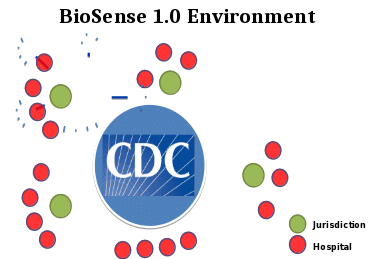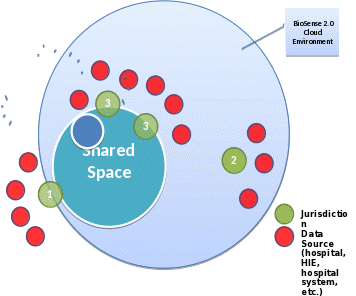Biosense Infrastructure
Attachment I_BioSense_Infrastructure_Diagrams.docx
Surveys of State, Tribal, Local and Territorial (STLT) Governmental Health Agencies
Biosense Infrastructure
OMB: 0920-0879
Attachment I

The diagram above depicts the set-up of BioSense 1.0. All data fed into CDC, bypassing STLT jurisdictions. In terms of onboarding, health information technology facilities sent data straight to CDC, occasionally through an STLT health department, and CDC held the data on servers internally. Analysis was performed in-house with no input or participation in the process by STLT health departments.
BioSense
2.0 Environment

![]()
BioSense 2.0 is different in the sense that it provides value first to STLT public health agencies. Each jurisdiction (state, territory, county, or city) will have its own space that it can control fully and decide what to share, at what level (aggregate or detailed), when, and with whom in the collaboration spaces. There is also an option for public-access sharing of data.
Three primary types of contributors
Jurisdictions who have their own Syndromic Surveillance (SS) systems and wish to locally sustain these systems
Jurisdictions who have their own SS systems and do not wish to locally sustain these systems
Jurisdictions who do not have SS systems
In each of these situations, the jurisdiction will work with CDC employees and contractors in order to onboard data feeds from hospitals, Health Information Exchanges (HIE), hospital systems, or their own state system (in house or vendor provided).
| File Type | application/vnd.openxmlformats-officedocument.wordprocessingml.document |
| Author | Spears, Katherine (Kate) (CDC/OSELS/PHSPO) (CTR) |
| File Modified | 0000-00-00 |
| File Created | 2021-01-31 |
© 2025 OMB.report | Privacy Policy